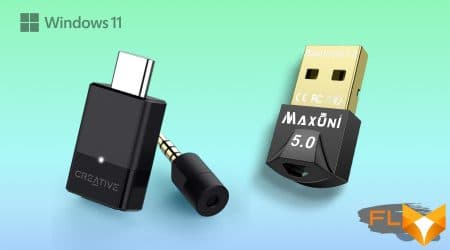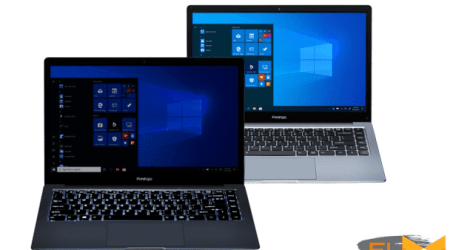In today’s digital landscape, understanding the quality of one’s online connection is more essential than ever. With various activities such as streaming, gaming, and remote work relying on a stable connection, knowing how to assess its capabilities can significantly enhance the user experience. Numerous tools and methods exist, making it possible for individuals to gain insight into their network performance quickly.
From sophisticated applications to simple websites, the options available for this purpose are abundant. These assessments can reveal crucial information about download and upload capabilities, latency, and more. By exploring different available tools, users can determine the most reliable options that suit their preferences.
Utilizing effective techniques not only empowers users to troubleshoot connectivity issues but also aids in making informed decisions when selecting service providers or upgrading their existing plans. This article will provide a comprehensive guide to ensuring that one’s connection is both optimal and consistent.
Understanding Internet Speed Basics
The amount of data transmitted over a network in a given time frame is a fundamental concept that many users encounter daily. Knowing how this aspect functions can vastly improve one’s experience in the digital realm. It is essential to grasp the elements that influence performance, including various factors such as bandwidth, latency, and connection type.
Bandwidth, often referred to as the maximum capacity of a connection, plays a crucial role in determining how much information can flow simultaneously. Higher values result in the ability to download or upload larger files more swiftly, making it an important measure for those who frequently stream videos or engage in online gaming.
Latency describes the delay before a transfer of data begins following an instruction for its transfer. It can significantly affect user experience, especially in real-time communications or gaming scenarios. Lower latency is preferable as it leads to quicker responses and smoother interactions.
Understanding these foundational concepts facilitates informed decisions when choosing a service provider or troubleshooting issues that may arise. A solid grasp of how these elements interplay can ultimately provide a more satisfying experience in the online world.
Tools for Measuring Connection Speed
There are numerous resources available that allow individuals to assess their network performance. Utilizing these tools can provide invaluable insights into the efficiency and reliability of a connection, helping users make informed decisions regarding their online activities.
Online Platforms
Many websites offer straightforward utilities for testing performance. Typically, these platforms measure latency, download, and upload rates through a simple interface. Users need to navigate to the site and initiate the test, usually with just a single click. Speedtest.net and Fast.com are among the most popular options, known for their user-friendly experiences and broad acceptance.
Mobile Applications
Mobile users can also find a variety of applications designed for performance evaluation. These apps are convenient for assessing connection quality on smartphones and tablets. For instance, Speedtest by Ookla offers a comprehensive solution for both Android and iOS, allowing users to monitor performance on the go. Such tools often provide additional features, including historical data tracking and comparison with regional averages.
Recommended Websites for Speed Tests
Finding reliable platforms for assessing network performance is essential for users wishing to gauge their connection capabilities. Various online tools provide straightforward interfaces and accurate results, making them suitable for everyone, regardless of technical expertise. Here are some noteworthy options to consider.
Popular Choices
Ookla’s Speedtest is one of the most well-known services in this domain. With a user-friendly design, it allows users to perform assessments quickly and view detailed statistics, including ping, download, and upload rates. Furthermore, its extensive server network ensures optimal results for various locations.
Other Notable Options
Fast.com is another excellent resource, developed by Netflix. With a minimalist layout, it focuses primarily on download performance, making it an ideal choice for streaming enthusiasts. Users can initiate tests effortlessly, and results are displayed within moments for immediate interpretation.
Each of these platforms provides unique features that cater to diverse user needs, ensuring that everyone can find a suitable solution for evaluating their connection quality.
Interpreting Your Speed Test Results
Understanding the outcomes of a performance evaluation is crucial for assessing connectivity capabilities. The results can provide valuable insights into the efficiency and reliability of a network, enabling users to identify areas for improvement or reassurance. By breaking down the primary components of the results, one can gain a clearer perspective on what the numbers truly signify.
Download and Upload Rates: These two figures represent the transfer rates for data being received and sent, respectively. High download metrics indicate that data can be received quickly, while elevated upload rates reflect efficient outbound data transmission. Recognizing the importance of both is essential for tasks such as streaming and video conferencing.
Latency: This measurement denotes the delay before data begins to travel across the network. Lower latency values are ideal, as they suggest that the connection is responsive and can handle real-time activities, like online gaming or VoIP calls. A higher latency may signal potential issues affecting overall performance.
Jitter: Jitter illustrates the consistency of latency over time. Minimal fluctuations in this metric are desirable, as they lead to a smoother experience during streaming or gaming. Excessive jitter can cause interruptions and degrade the quality of service, which can be particularly frustrating during critical activities.
By thoroughly analyzing these critical elements, one can make informed decisions about connectivity solutions, optimize device placement, or seek alternatives if necessary. This knowledge empowers individuals to enhance their online activities effectively.
Common Factors Affecting Internet Speed
Numerous elements can influence the performance of a network connection, leading to fluctuations in the quality and rate of data transmission. Understanding these factors is essential for optimizing connectivity and enhancing the overall online experience.
One major aspect is bandwidth, which refers to the maximum amount of data that can be transmitted over a network in a given amount of time. Higher bandwidth typically allows for smoother browsing and quicker downloads, while lower bandwidth may result in sluggish performance.
Network congestion is another critical factor. When many users access the same network simultaneously, competition for available resources can lead to reduced performance. This scenario is common during peak hours when many people are online, creating bottlenecks in data flow.
Distance from the router also plays a vital role. The further a device is located from the wireless router, the weaker the signal strength becomes, leading to potential disruptions and slower loading times. Physical obstructions like walls and furniture can exacerbate this issue.
Additionally, signal interference from other electronic devices, such as microwaves or cordless phones, can degrade connectivity quality. This interference can result in packet loss or inconsistent performance, impacting user experience.
Lastly, hardware limitations, such as outdated modems or routers, can restrict performance levels. Upgrading equipment can significantly enhance connectivity, ensuring compatibility with higher-speed plans offered by service providers.
Improving Your Internet Performance Tips
Optimizing online performance can significantly enhance user experience. Implementing effective strategies may lead to faster connectivity, reduced latency, and better reliability. Below are some practical suggestions to elevate overall performance for seamless browsing, streaming, and gaming.
| Tip | Description |
|---|---|
| Upgrade Equipment | Consider modern routers and modems that support higher speeds and advanced features. |
| Use Wired Connections | Connect devices directly to the router with Ethernet cables for more stable connectivity. |
| Minimize Interference | Position your router away from obstructions and electronic devices that may cause signal disruption. |
| Limit Connected Devices | Reduce the number of devices using the connection to enhance performance for active users. |
| Regularly Update Firmware | Check and apply updates to your networking devices to maintain optimal functionality. |
| Optimize Browser Settings | Clear caches and regularly update web browsers to ensure smooth navigation. |
| Choose the Right Plan | Evaluate service provider options to select a plan that meets your data requirements. |
Q&A: How to check your internet speed
How can you run an internet speed test to check your download and upload speeds?
To run an internet speed test and check your download and upload speeds, you can use online tools like Speedtest.net or Google’s speed test tool. Simply open the tool on your device, click “Run the Test,” and it will measure how fast data travels from the internet to your device (download speed) and from your device to the internet (upload speed). The results are typically measured in megabits per second (Mbps). A good internet speed depends on your internet plan and needs, such as streaming video calls or downloading large files.
What is considered a good internet speed for video calls and uploading large files?
A good internet speed for video calls and uploading large files usually requires at least 10 Mbps for download speed and 5 Mbps for upload speed. Faster internet speeds, such as 25 Mbps or higher, are ideal for high-quality video calls and uploading large files without lag. Your internet connection should also have a strong Wi-Fi signal and minimal interruptions for smoother performance.
What should you do if your internet speed is slower than expected during a speed test?
If your internet speed is slower than expected during a speed test, first ensure that your Wi-Fi connection is stable by moving closer to the router or resetting your home network. Check if other devices are using the internet heavily, which could slow down your speed. You may also contact your internet service provider (ISP) to verify your internet plan and see if there are any issues with your broadband connection. Running multiple tests at different times of day can help identify whether the slow internet is due to congestion.
How does a speed test measure the speed of your internet connection, and what do the results mean?
A speed test measures the speed of your internet connection by calculating the time it takes for data to travel from your device to a test server and back. Download speed refers to how fast your device receives data from the internet, while upload speed measures how fast data is sent to the internet. The results are displayed in megabits per second (Mbps), and the test tool provides an accurate test of your connection’s performance at that moment. For accurate test results, make sure your device has a strong Wi-Fi signal or is connected via Ethernet.
How can you run a speed test on your WiFi to check your internet speed?
To run a speed test on your WiFi and check your internet speed, use a trusted speed test tool like Speedtest.net or Google’s speed test tool. Open the tool on your phone, tablet, or computer connected to your WiFi network, then click “Run a speed test.” The tool will measure your upload and download speeds, as well as your network speed, providing you with the internet speed test results in megabits per second (Mbps). Ensure you have a strong WiFi connection for accurate results.
What is considered a good speed for home internet, and how much speed do you need?
A good speed for home internet depends on your usage. For basic browsing and streaming, 25 Mbps for download speed is typically enough, while heavier usage like gaming or video conferencing may require at least 100 Mbps. To determine how much speed you need, run a speed test on your computer or phone and compare the results to your internet provider’s plan. Fast internet ensures smoother performance for activities like video calls, large downloads, or streaming in 4K.
Why is my WiFi speed slower than expected, and how can I improve it?
If your WiFi speed is slower than expected, it may be due to network congestion, distance from the router, or interference from other wireless devices. To improve your WiFi connection, move closer to the router, reduce the number of devices using the network, or upgrade to a more powerful router. You can also run a speed test to see your current internet speeds and compare them with your internet provider’s promised speeds. For the best performance, make sure your WiFi signal is strong and uninterrupted.
How can you test your internet speed with Xfinity or other broadband internet providers?
To test your internet speed with Xfinity or any other broadband internet provider, go to your internet provider’s website or use a third-party speed test tool like Speedtest.net. Connect your device to your home WiFi or Ethernet, and click “Test my internet speed.” The speed test will measure your upload and download speeds, showing how fast your internet connection is. If your results show lower speeds than what you’re paying for, it may be time to contact your internet provider for support or consider upgrading your plan.




